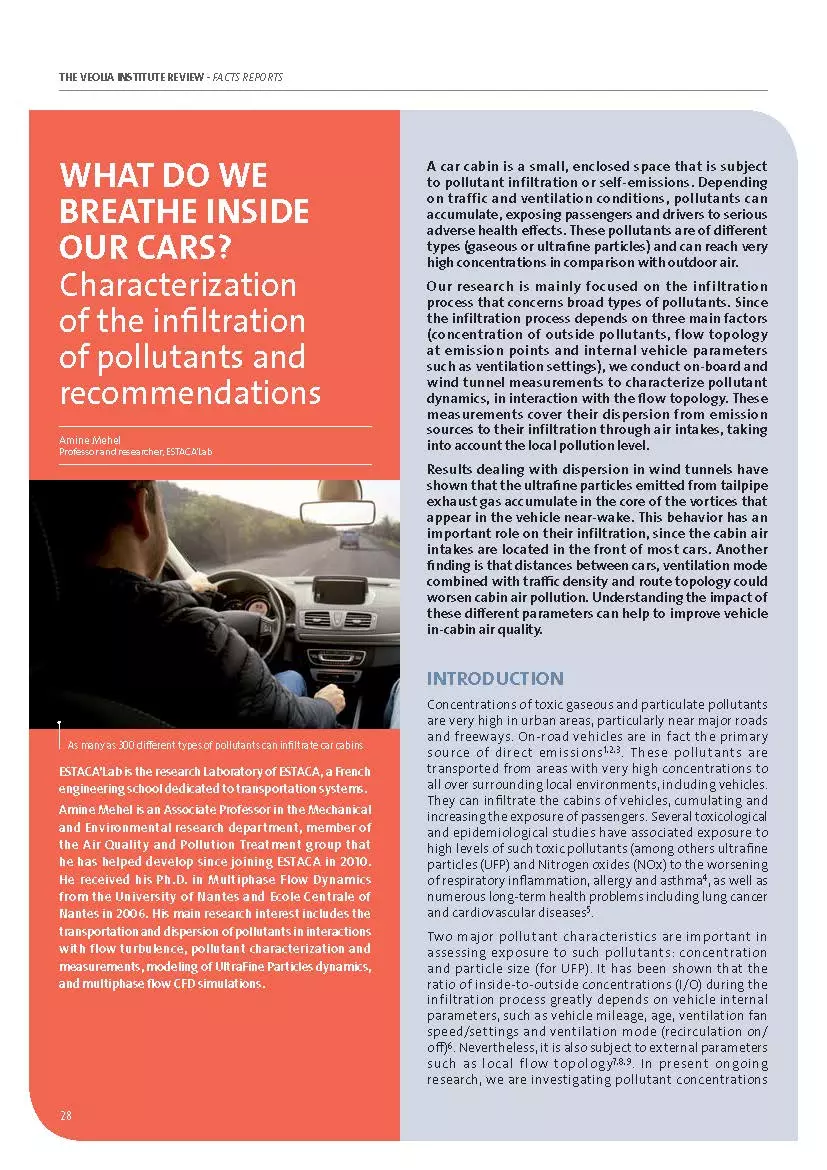Amine Mehel
Professor and researcher, ESTACA’Lab
A car cabin is a small, enclosed space that is subject to pollutant infiltration or self-emissions. Depending on traffic and ventilation conditions, pollutants can accumulate, exposing passengers and drivers to serious adverse health effects. These pollutants are of diff erent types (gaseous or ultrafine particles) and can reach very high concentrations in comparison with outdoor air.
Our research is mainly focused on the infiltration process that concerns broad types of pollutants. Since the infiltration process depends on three main factors (concentration of outside pollutants, flow topology at emission points and internal vehicle parameters such as ventilation settings), we conduct on-board and wind tunnel measurements to characterize pollutant dynamics, in interaction with the fl ow topology. These measurements cover their dispersion from emission sources to their infiltration through air intakes, taking into account the local pollution level.
Results dealing with dispersion in wind tunnels have shown that the ultrafi ne particles emitted from tailpipe exhaust gas accumulate in the core of the vortices that appear in the vehicle near-wake. This behavior has an important role on their infiltration, since the cabin air intakes are located in the front of most cars. Another finding is that distances between cars, ventilation mode combined with traffi c density and route topology could worsen cabin air pollution. Understanding the impact of these diff erent parameters can help to improve vehicle in-cabin air quality.



